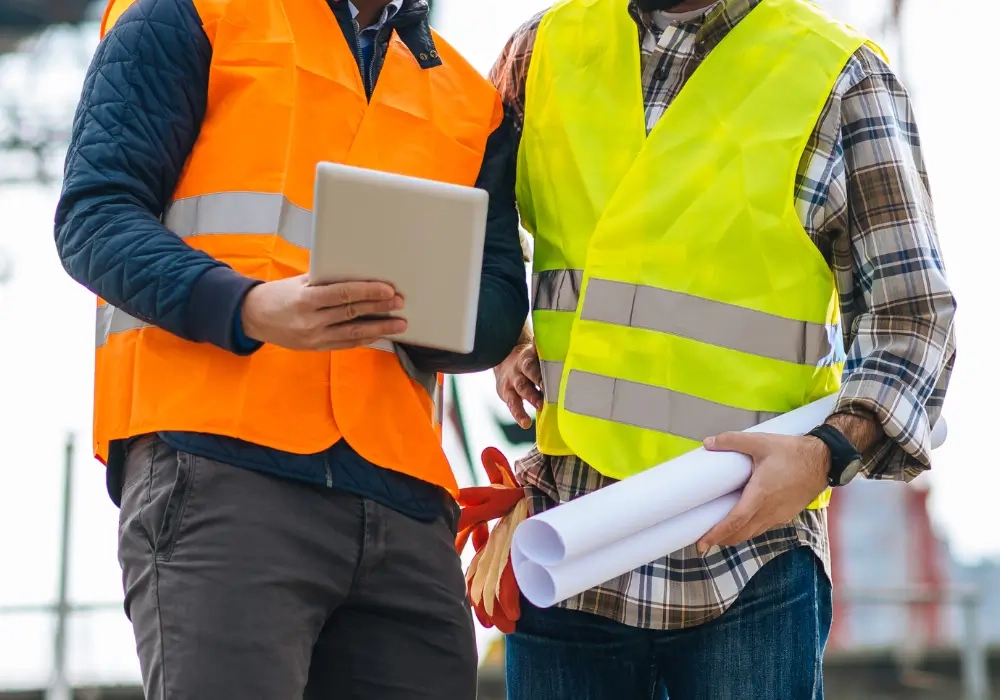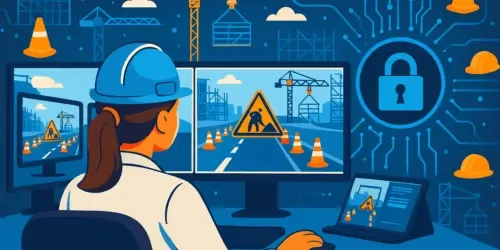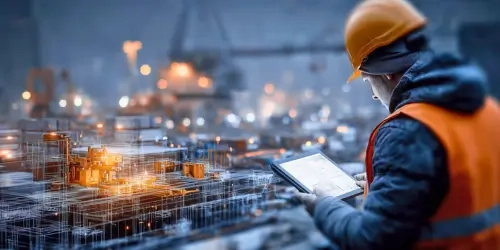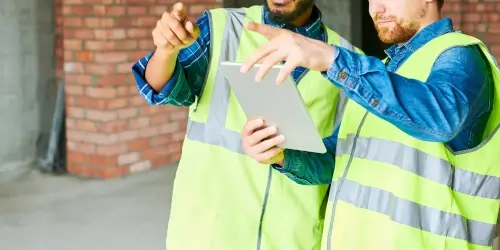When IT and safety teams are not aligned, problems on the construction jobsite multiply. A camera feed goes down, and safety can’t investigate an incident. A new sensor gets installed, but IT wasn’t looped in to secure the connection. The fallout is higher risk, wasted time, and, sometimes, compliance is lost, all of which can escalate common safety concerns.
The solution starts with getting leadership on the same page. When digital systems and safety operations use a shared strategy, sites become more secure, compliance becomes proactive, and both teams gain a clearer view of what’s happening on the ground.
Why IT and Safety Often Clash
For IT, “safety” means cybersecurity, which involves protecting data, defending networks, and closing vulnerabilities before someone exploits them. For safety leaders, it means injury prevention, managing PPE, and keeping machinery and workers in harmony through consistent safety practices.
Both teams deal with risk, but digital threats look nothing like physical dangers. This creates real problems on construction jobsites.
Most conflicts start with timing. IT wants proper configuration before a new device goes live, while safety wants cameras installed yesterday because theft reports are climbing. Add budget constraints, scattered reporting systems, and incompatible KPIs, and even small disagreements can turn into ongoing tension between departments running separate safety initiatives.
Behind that tension lies isolation. IT teams rarely walk the jobsite. Safety rarely sees the backend of a cloud platform. As a result, they make decisions in silos, each unaware of the pressures shaping the other’s world. That’s how simple gaps like a delayed firmware update or an unmonitored sensor spiral into real safety or compliance risks.
Why Alignment Matters More Than Ever
Construction jobsite security is evolving into a fully connected, data-led operation that demands closer coordination between teams. Every camera, sensor, and access point feeds into a web of live data that defines how a site runs. IT manages that data flow, while safety depends on it.
If the two aren’t aligned, the entire system becomes reactive instead of preventive. This weakens the overall safety leadership across the site.
Regulators are paying attention too. Digital compliance reporting is fast becoming the norm, and fragmented data is one of the main reasons behind failed audits. The old way of safety logging incidents on paper while IT files network reports separately simply doesn’t hold up anymore. This gap often slows safety initiatives that rely on real-time collaboration.
At the same time, the technology itself has evolved. AI-powered tools can now detect PPE violations, identify smoke before it’s visible to the human eye, or measure air quality in real-time. But these gains only materialize when IT secures the infrastructure and safety teams act on the insights. When one side lags, the other’s efforts fall short, opening the door to new safety concerns.
Shared Goals: Security, Safety, and Compliance
On paper, IT and safety seem to chase different outcomes. One protects systems, the other protects people. But at their core, they’re solving the same problem: risk.
When a system goes down, IT sees downtime, whereas safety sees blind spots. When a policy is ignored, IT sees exposure, while safety sees danger. It’s two perspectives of the same equation, and both can be solved with alignment.
Shared visibility in the construction jobsite security turns finger-pointing into problem-solving. Imagine a single dashboard showing live camera feeds, access logs, and PPE compliance alerts. IT monitors uptime and encryption, while safety monitors behavior and conditions. Both act in real-time, drawing from the same source of truth.
That’s how risk management grows from isolated tasks into a shared culture. Everyone, from project managers to site workers, starts understanding that data security and physical safety aren’t separate goals, but parts of the same responsibility, and that’s the mindset true safety leadership builds.
The Role of Technology in Connecting Teams
Technology is where alignment stops being an idea and becomes something you can measure, manage, and rely on.
Centralized Video Surveillance Systems
Surveillance is a good starting point. Today’s systems aren’t passive, but rather intelligent networks collecting data that matters to both teams. IT keeps them secure, while safety uses the footage to investigate incidents or spot unsafe behavior before it escalates.
-
Solar Surveillance Trailers offer mobility and power independence, ideal for temporary, remote, or developing sites, especially those with emerging threats.
-
Pole Cameras extend coverage to high-risk areas, reducing the chance of blind spots.
-
Mobile surveillance setups let IT manage feeds remotely while safety teams access live video or playback in seconds.
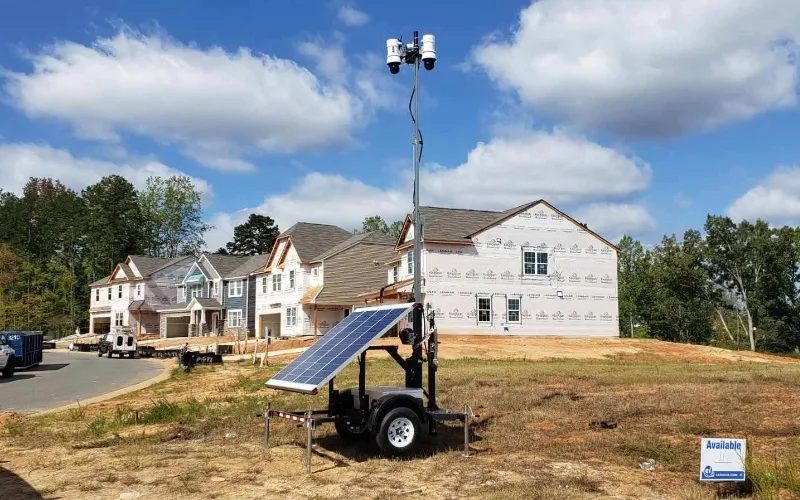
Smart Detection Systems for Proactive Response
Smart Detection Systems move beyond observation to actually predicting problems, giving both teams early warning.
-
PPE Detection and Monitoring helps safety teams confirm compliance without needing to patrol every corner of the jobsite, while real-time alerts allow them to take immediate action when a breach occurs.
-
Smoke and Fire Detection spots hazards even when the site’s empty.
-
Intrusion Detection alerts both teams instantly when boundaries are crossed.
Environmental Monitoring Solutions
Safety extends to the air the workers breathe, the noise they hear, and the weather that shapes the workday.
-
Environmental Monitoring Solutions gather all those insights.
-
With tools for Noise Monitoring, Air Quality Monitoring, and Weather Monitoring, both teams stay informed before small issues turn into compliance breaches or health risks.
Stellifii: All-in-One Platform for Safety and IT
Every jobsite runs on data, but most of it is never collated in a central place. Video lives in one system, sensor data in another, and environmental reports in a third. IT guards the digital gates while safety digs through spreadsheets to prove compliance.
Stellifii cloud platform connects every surveillance unit, sensor, and detector in one clean interface. Instead of switching between suppliers or systems, teams log in once and see everything: live video, AI detections, noise levels, air quality, weather patterns, and system health.
Here’s what that means in practice:
-
For IT: Simplified control. Every connection runs through AES256-encrypted, NDAA-compliant infrastructure. There’s no software to install, no local servers to maintain, and no network headaches to troubleshoot. Uptime, diagnostics, and connectivity are all visible in real-time.
-
For Safety Leaders: Real visibility. They can see who’s wearing PPE, check smoke alerts, review intrusion clips, or monitor air quality thresholds, all with evidence backed by timestamps and video snapshots.
During the day, Stellifii gives teams total oversight: live feeds, environmental dashboards, and system performance data at a glance. At night, it switches into AI-powered protection mode, detecting movement patterns, triggering alerts, and capturing verified footage before an incident grows.
In short, Stellifii gives both departments one trusted source of truth.
Benefits of a Unified Strategy
Key benefits of aligning IT and safety teams include:
-
Faster, data-led decisions: Shared dashboards mean less guessing and more clarity. Small anomalies trigger quick responses before they become major problems.
-
Simplified compliance: Instead of chasing fragmented logs, safety managers can export full histories directly from Stellifii with video evidence and diagnostics. IT teams can present encryption standards, access logs, and device health during audits.
-
Predictive awareness: Stellifii turns reactive systems into proactive ones. Noise spikes, air quality dips, or connectivity drops prompt instant checks, keeping operations ahead of risk.
-
Cultural and leadership alignment: Shared data changes how teams communicate. It’s no longer “Your system failed,” but rather, “What does the data tell us?” That shift builds trust and shared accountability.
Building a Culture of Collaboration
Here’s how to close the gap between IT and safety team members:
-
Train together. Run joint drills using real footage and system data. Let IT handle the tech, and safety handle the field response. Track shared KPIs like camera uptime, PPE compliance, and response time so everyone measures success the same way.
-
Plan tech rollouts as one team. Involve safety before a purchase, not after. IT checks network security, while safety checks coverage and usability. Test on one site, fix what breaks, then scale.
-
Review systems, not just incidents. Hold short monthly reviews to see what’s working and what’s annoying users. Tweak alert thresholds, patch schedules, or access rights before bad habits set in.
-
Make accountability visible. Create one steering group that owns both security and safety outcomes. Celebrate wins publicly. Culture shifts when people see results.
Unified Teams, Safer Sites
When IT and safety finally work as one, jobsites stop firefighting and start improving. WCCTV’s solutions make that collaboration happen. From smart detection systems to environmental monitoring and the Stellifii platform, every tool feeds into one shared view of the jobsite, which is secure, verified, and easy to use.
Contact WCCTV today and discover how one connected platform can unite your teams, strengthen compliance, and make your jobsites safer than ever.
FAQs
What makes safety leadership effective in construction?
Effective safety leadership means being proactive, not reactive. The best safety leaders lead by example, encourage clear communication, and back decisions with real data. They don’t just enforce rules, but rather inspire safe behaviour and drive measurable safety performance across every level of the site.
How can companies improve their safety practices?
Safety improvements start with consistency. Regular safety training, updated safety procedures, and reliable safety equipment ensure that standards are met daily. When leaders track progress and act on safety concerns immediately, safety practices evolve instead of staying stagnant.
Why is team alignment essential for safety performance?
Safety performance depends on everyone pulling in the same direction. Team alignment ensures IT, management, and field teams share the same safety goals and communication channels. This clarity reduces missteps, boosts response times, and strengthens overall workplace safety.
What are the most common safety concerns on construction sites?
Falls, poor visibility, and unauthorized access remain top safety concerns. Smart surveillance and automated alerts help detect these risks in real-time, while clear safety procedures and leadership oversight prevent them from repeating.
How do safety initiatives improve long-term safety performance?
Safety initiatives turn short-term fixes into lasting habits. By combining technology, accountability, and education, effective safety leaders create systems that continuously measure and improve safety performance.
